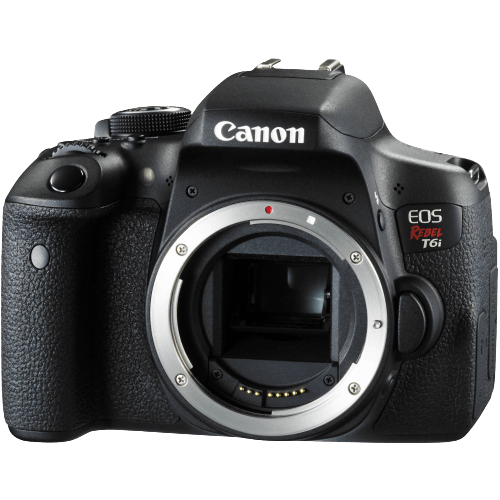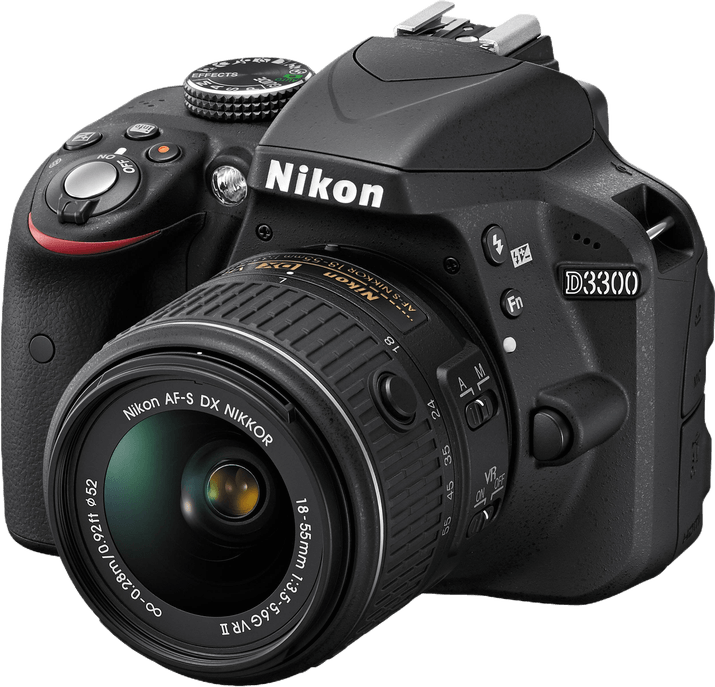Canon EOS Rebel T6i / 750D vs Nikon D3300 Comparison
Canon EOS Rebel T6i / 750D

Nikon D3300

The Canon EOS Rebel T6i/750D edges out the Nikon D3300 with a score of 56/100 compared to 55/100. Both cameras are DSLRs, released in 2015 and 2014 respectively, and have similar dimensions – the Canon T6i measures 132 x 101 x 78mm, while the Nikon D3300 is slightly smaller at 124 x 98 x 76mm.
The Canon T6i surpasses the Nikon D3300 in certain aspects, including a higher score and a more recent release date. It also weighs more at 555g, compared to the Nikon D3300’s 430g, which could indicate better build quality. However, the Nikon D3300 has a lower launch price of $650, making it more affordable than the Canon T6i’s $750 price tag.
Taking all factors into account, the Canon T6i is slightly better in terms of specifications, but the Nikon D3300 offers a more budget-friendly option for those seeking a high-quality DSLR camera.
Canon EOS Rebel T6i / 750D vs Nikon D3300 Overview and Optics
The Nikon D3300 outperforms the Canon EOS Rebel T6i / 750D in terms of optics, scoring 64/100 compared to the Canon’s 59/100. Both cameras share several specifications, including 24.2 megapixels, a shooting speed of 5, a CMOS sensor type, APS-C sensor size, and no image stabilization. However, there are key differences that make the Nikon D3300 the winner in this comparison.
The Nikon D3300 has a superior DXOMARK score for the sensor, boasting an 82 compared to the Canon T6i’s 71. This higher score means that the Nikon D3300’s sensor is better at capturing images with more detail, better color depth, and improved low-light performance. Moreover, the Nikon D3300 features the Expeed 4 processor, which is faster and more efficient than the Canon T6i’s Digic 6 processor. This allows the Nikon D3300 to process images more quickly and effectively.
Despite its lower overall score, the Canon T6i does have some advantages. Its lens mount is the Canon EF-S, which provides compatibility with a wide range of Canon lenses. This could be beneficial for photographers who already own Canon lenses or prefer the Canon lens lineup.
In comparing the optics of the Canon EOS Rebel T6i / 750D and the Nikon D3300, the Nikon D3300 emerges as the superior camera due to its higher DXOMARK sensor score and more efficient processor. However, the Canon T6i may still appeal to some photographers, particularly those who value its compatibility with Canon’s extensive lens lineup.
Canon EOS Rebel T6i / 750D vs Nikon D3300 Video Performance
The Nikon D3300 outperforms the Canon EOS Rebel T6i / 750D in video capabilities, with a score of 56 compared to the Canon’s 43. Both cameras share common features, such as Full HD video resolution and maximum video dimensions of 1920 x 1080. Neither camera has built-in time-lapse functionality.
The Nikon D3300’s superiority in video capabilities is primarily due to its higher maximum video frame rate of 60fps, compared to the Canon T6i’s 30fps. This higher frame rate allows for smoother video playback and better slow-motion effects. The increased frame rate is a significant advantage for those interested in capturing fast-moving subjects or creating high-quality cinematic videos.
The Canon T6i, however, does not have any distinct advantages over the Nikon D3300 in terms of video capabilities. The lower score of 43 indicates that the camera’s video performance is inferior to that of the Nikon D3300.
To sum up, the Nikon D3300 surpasses the Canon EOS Rebel T6i / 750D in video performance due to its higher frame rate of 60fps. This makes the Nikon D3300 a better choice for those prioritizing video capabilities in their camera selection. The Canon T6i, on the other hand, does not offer any specific advantages in this area and is outperformed by the Nikon D3300.
Canon EOS Rebel T6i / 750D vs Nikon D3300 Features and Benefits
The Canon EOS Rebel T6i / 750D triumphs over the Nikon D3300 in terms of features, scoring 57/100 compared to the Nikon’s 41/100. Both cameras share several specifications, such as a 3-inch screen size and the absence of GPS.
The Canon T6i / 750D outperforms the Nikon D3300 in several key areas. Firstly, it boasts a higher screen resolution of 1,040,000 dots, compared to the Nikon’s 921,000 dots. This results in a sharper and clearer display. Additionally, the Canon T6i / 750D features a touchscreen, allowing for more intuitive navigation and control. The inclusion of a flip screen on the Canon T6i / 750D enables flexible shooting angles, aiding in capturing unique perspectives. Furthermore, the Canon T6i / 750D includes WIFI connectivity, allowing for seamless image transfer and remote camera control.
In contrast, the Nikon D3300 lacks some of the advanced features found in the Canon T6i / 750D. It does not have a touchscreen, flip screen, or WIFI connectivity. This may limit its usability and convenience for some users.
To conclude, the Canon EOS Rebel T6i / 750D is the superior camera in terms of features, offering a higher screen resolution, touchscreen, flip screen, and WIFI connectivity. On the other hand, the Nikon D3300 falls short in these areas, potentially limiting its appeal to users who prioritize advanced features and connectivity options.
Canon EOS Rebel T6i / 750D vs Nikon D3300 Storage and Battery
The Nikon D3300 outperforms the Canon EOS Rebel T6i / 750D in storage and battery with a score of 32/100 compared to the Canon’s 24/100. Both cameras have one memory card slot and accept SD, SDHC, and SDXC memory cards. However, the Canon T6i is UHS-I compatible, offering faster data transfer speeds.
The Nikon D3300 has a significantly longer battery life, providing 700 shots per charge, whereas the Canon T6i only lasts for 440 shots. The batteries differ as well, with the Nikon using an EN-EL14a and the Canon using an LP-E17 battery. Neither camera supports USB charging.
Despite the Canon T6i’s UHS-I compatibility, the Nikon D3300’s longer battery life gives it an advantage in the storage and battery category. The Canon T6i’s faster data transfer speeds may be beneficial for some users, but the Nikon D3300’s overall performance in this area is superior.
Alternatives to the Canon EOS Rebel T6i / 750D and Nikon D3300
Are you still undecided about which camera is right for you? Have a look at these popular comparisons that feature the Canon EOS Rebel T6i / 750D or the Nikon D3300:

